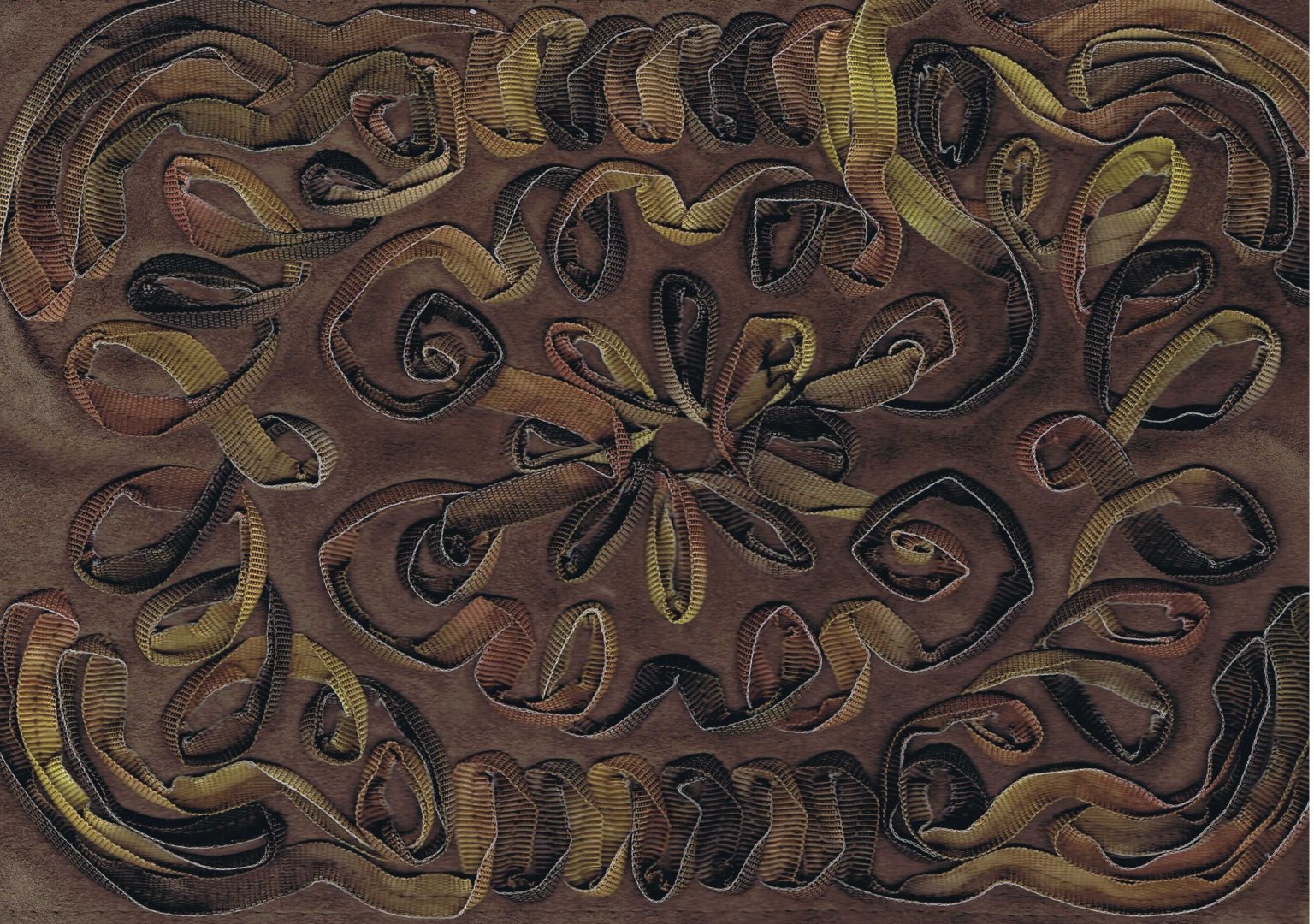Introduction to the world of webbing, ribbon and mignon in high fashion embroidery
Embroidery design: the art of incorporating webbing, ribbons and mignons
Designing embroidery designs that include webbing, ribbons, and mignons is a detailed process that begins with careful planning by designers. Using advanced design software, creatives work out intricate drawings that indicate exactly where and how each element will be applied to the fabric. These drawings function as precise maps for the artisans, guiding each step of the application process. The design not only specifies locations, but also the types of stitching and application techniques needed to achieve the desired effect, ensuring that the end result is visually impactful and technically flawless.

How to select the perfect materials for webbing and ribbon embroidery
The selection of materials for webbing and ribbon embroidery is a key aspect that directly affects the quality and aesthetics of the finished product. Materials such as grosgrain, organza, soutache, and leather borders are chosen not only for their beauty but also for their ability to blend harmoniously with the base fabric. Designers must consider various factors such as durability, flexibility, and the materials' reaction to heat and handling during the sewing process. The right choice of materials ensures that the applied details not only enhance the design but also maintain their shape and color over time, increasing the longevity and value of the garment.
Preparing the fabric for the application of embroidery with ribbons and mignons
Before proceeding with the application of ribbons, webbing and mignons, it is essential to prepare the fabric so that it is as smooth and stable as possible. This preparation process includes securing the fabric through webbing or using specific products to increase its tension and flatness. A well-prepared fabric is critical to ensure that applied details do not distort or shift during the stitching process. This step is crucial to avoid errors in the placement of decorative details that could compromise the appearance and quality of the finished product.
Precision in fabric preparation reflects the quality of craftsmanship and underscores the importance of a solid foundation for high-quality embroidery.
Manual and automated application techniques for haute couture embroidery
Embroidery application techniques in the high fashion industry can vary significantly between manual and automated application, each with its own advantages.
Manual application, carried out by experienced artisans, allows for greater customization and attention to detail, which is essential for one-of-a-kind or small series pieces. This method requires a high degree of precision and skill in the use of sewing techniques that carefully secure each webbing, ribbon, and mignon to the fabric.
On the other hand, automated application through specialized embroidery machines offers speed and consistency, ideal for large-scale production. These machines are programmed to replicate exactly the designs created by designers, applying decorative details with extreme precision on a wide range of fabrics.
Sewing and fastening methods for webbing and ribbons in embroidery
Stitching and fastening techniques for webbing and ribbons are essential to integrate these decorative elements into the base fabric in a durable and aesthetically pleasing manner. Seams must not only be durable but also complement the appearance of the final design. Common methods include the use of matching threads that blend harmoniously with the materials used, as well as decorative stitching techniques that add an additional level of detail to the finished piece. In addition, some applications may require special attachment methods such as adhesives or heat sealing, especially when traditional stitching materials may not be adequate. These techniques ensure that each applied element remains firmly in place, maintaining the shape and integrity of the design even with frequent use and the passage of time.
Finishing and quality control in embroidery with ribbons and mignons
The finishing and quality control stage is crucial in the process of creating garments decorated with ribbons, webbing and mignons. After the application of decorative details is completed, each piece goes through a rigorous inspection process to ensure that it meets the high quality standards required in high fashion. This includes visually inspecting each detail, checking the strength of the stitching, and making sure there are no defects such as loose threads or misalignments in the designs. Quality control specialists use bright light and magnifying glasses to minutely examine fabrics, ensuring that every element is flawless. In addition, garments may be subjected to wear tests to ensure that the patterns remain intact even after use. Only after these inspections are the pieces approved for the next stage.
Packaging and delivery of embroidered clothing and accessories
The process of packaging and delivery of embroidered clothing and accessories is equally critical to ensure that each item arrives to the customer in perfect condition. Packaging is designed to protect the delicate details of embroidery during transport. Items are wrapped in soft materials and often placed in rigid boxes that prevent any movement that could damage the fabrics or decorations. In addition, each piece is accompanied by detailed care instructions, ensuring that customers can maintain the beauty of the garment over time. Delivery logistics are carefully coordinated to meet customers' requested timelines, often through specialized couriers who carefully handle high-fashion garments.
This level of care in packaging and delivery reflects the embroiderers' commitment to excellent service, cementing their reputation in the haute couture market.